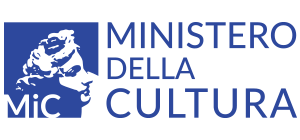Archè. Il principio e l’acqua
Shapes of water
Hydria
The hydria was the quintessential vessel used for drawing and transporting water. Its three handles were designed to facilitate this task and reflect its original function, tied to a daily chore traditionally performed by women. Unsurprisingly, ancient vase depictions often show women filling hydriai at fountains, which were not only essential sources of water but also social gathering places and at times, sites of danger. Beyond fulfilling a vital need, water held deep symbolic meaning: it was associated with purification, fertility, and transformation, especially during life’s transitional moments.
For this reason, the hydria acquired a value that transcended its practical use. In funerary contexts, it appears as part of the grave goods or as a cinerary urn. In sacred settings, it is often found in miniature form: small hydriai offered as votive gifts, frequently accompanied by female figurines and seeds evidence of rituals linked to the feminine cultic sphere and fertility. Even in these reduced versions, the vessel retained its function, holding liquids or food substances to be offered to the deity.
Louterion
The louterion is a large vessel used for collecting water, distinguished by a wide basin supported by a tall stand with a flared base. Its primary function was for washing and cleansing. Numerous examples of louteria have been found in both domestic and sanctuary contexts, attesting to a variety of uses.
These vessels span from the Greek to the Roman periods and are typically made of stone or undecorated ceramic with molded embellishments. They are frequently depicted on Attic and Italiote figured pottery, often shown in association with fountain spouts pouring water into them. In Apulian and Lucanian ceramics, the theme is often expressed through scenes of female grooming, showing young nude women engaged in bathing and cosmetic rituals. These moments were key in a girl’s life, as they allowed her to acquire charis, the grace that leads to seduction and ultimately marriage. Thus, the louterion becomes a tool of feminine allure, and its mere depiction evokes the erotic sphere.
Situla
The situla – a small bucket – is a container characterized by a flat base, sometimes disc/ringed-shaped, or tripod, an ovoid body of varying width, occasionally equipped with a spout for pouring liquids, and a handle arching over the rim. It could be made of bronze, silver, or ceramic; the clay versions often imitate more refined metal prototypes.
Defining the situla’s role in Classical and Hellenistic times is complex. Archaeological contexts and iconographic sources reveal a dual function: on one hand, it was associated with the ritualized consumption of wine and the Dionysian world, and more broadly with libations involving wine or water; on the other, it served as a domestic tool for drawing and transporting water from wells or fountains for use or transfer into other containers.
Pilgrim flask (so-called “costrel”)
So-called “pilgrim flasks” were small to medium-sized containers made of leather, terracotta, wood, and occasionally metal, historically used as portable drinking vessels for water, wine, or beer.
They featured a more or less globular body, a narrow neck, and two or more handles set vertically or horizontally to allow suspension.
The mammiform type in particular with a flat back and domed front, became widespread from the Middle Ages to the modern era. Its design was technically efficient: it adhered well to the body for comfortable transport, worn over the shoulder, at the waist, or hanging, offered stable placement on flat surfaces thanks to its added base and flat rear wall, and optimized volume through its expanded front wall.
Loutrophoros
The loutrophoros is a vessel with an elongated ovoid body, a very tall neck, and vertical handles. Its name indicates its use in transporting loutra, ceremonial bath waters used in wedding rituals. The shape is attested in Athens from the late 8th century BCE, while in Apulian contexts it appears only from the second half of the 4th century BCE. From its earliest Attic examples, it served a dual purpose: associated both with nuptial rites and funerary rituals honoring the deceased.
Southern Italian specimens are typically decorated with imagery related to the female world or scenes paying homage to the dead. It has been suggested that placing the vessel in tombs may signify a premature death before marriage.
Podanipter, basin, and phiale
The podanipter, basin, and phiale are characterized by wide bowls suitable for holding liquids.
The podanipter, literally a foot-washing basin, has a distinctive shape with three short feet. Beyond its use as a washbasin, it also served a ritual function for holding lustral water. Basins made of undecorated common ceramic were likely used primarily for daily water consumption.
Phialai typically feature a central indentation and are made of bronze. In Italiote ceramics, this vessel appears frequently in diverse scenes and with various figures. It is often shown in the hands of individuals pouring liquid into it from a jug, suggesting its role in libation sets, likely used in multiple rituals, though not tied to any single one.
Trozzella
The trozzella is the most distinctive form of Messapian pottery, recognizable by its tall handles topped with plastic discs, the “trozze” that give the vessel its modern name. Originating in the 6th century BCE, it remained in use until the mid-3rd century BCE, especially in funerary contexts. Found almost exclusively in the tombs of adult women, the vessel is interpreted as a marker of identity and social status, reflecting the rank and role of the deceased. Smaller versions, documented between the late 4th and 3rd centuries BCE in child burials, show the evolution of its meaning toward a broader role as a feminine indicator.
Plastic vase
The plastic vase features an almond-shaped body with convex walls, two small handles, and a spout for pouring liquids. Similar vessels are well attested among Attic black-glazed wares. The word “hygieias”, health, inscribed beneath the spout, clarifies its function: filled with hot water, it was used as a thermal pouch to soothe and relieve pain.
Storage amphora
Amphorae are large containers used for storing foodstuffs. They differ from pithoi, large jars, in that they were specifically designed for transport, hence their two vertical handles for handling.
Although traditionally associated with wine, amphorae were often reused to transport and store various food items, including water. Given their high economic value, it is reasonable to assume that a single amphora could serve multiple purposes throughout its long life, depending on need.
Table and pantry amphorae with filter variants
Later table and pantry amphorae often exhibit features still present in contemporary traditional Apulian ceramics.
They were used to store liquids (mostly water, but also wine) and occasionally for drinking directly from the vessel. The narrow, swollen neck facilitated small sips and helped prevent impurities from entering.
Some examples included a ceramic filter at the base of the neck, designed to filter incoming liquid. This feature derives from the Arab-Islamic artisanal tradition documented in Apulia from the Middle Ages, whose influence persists into the modern era.





